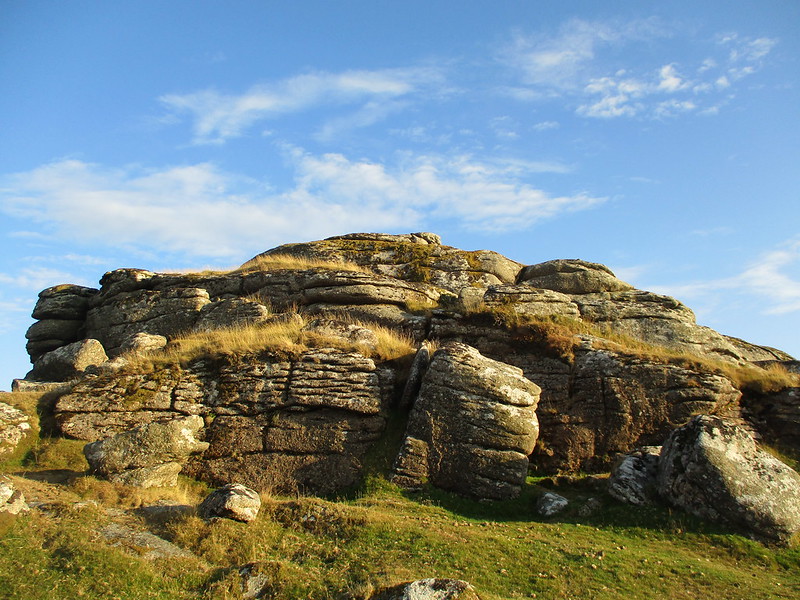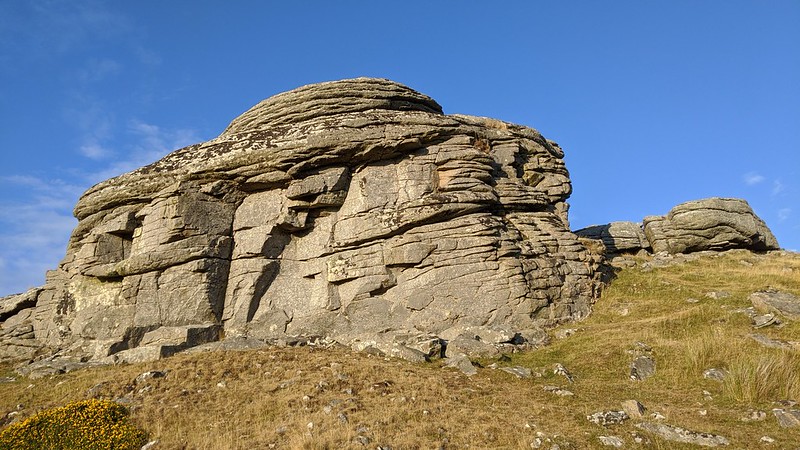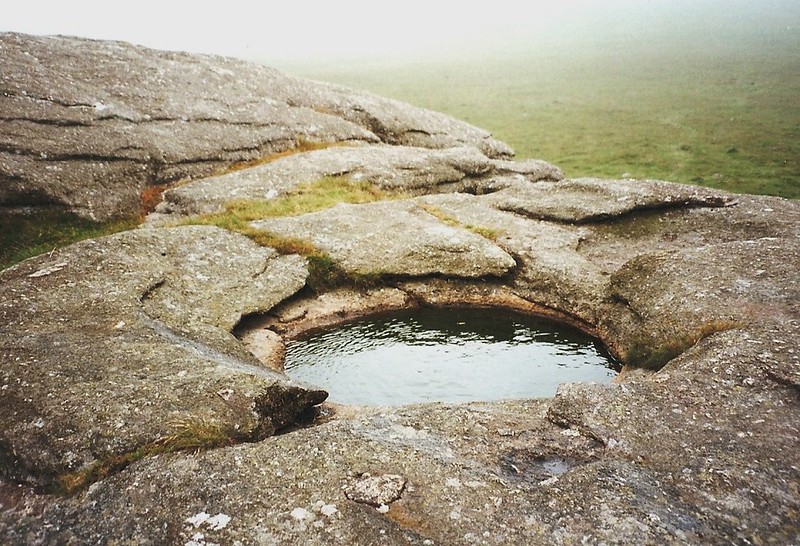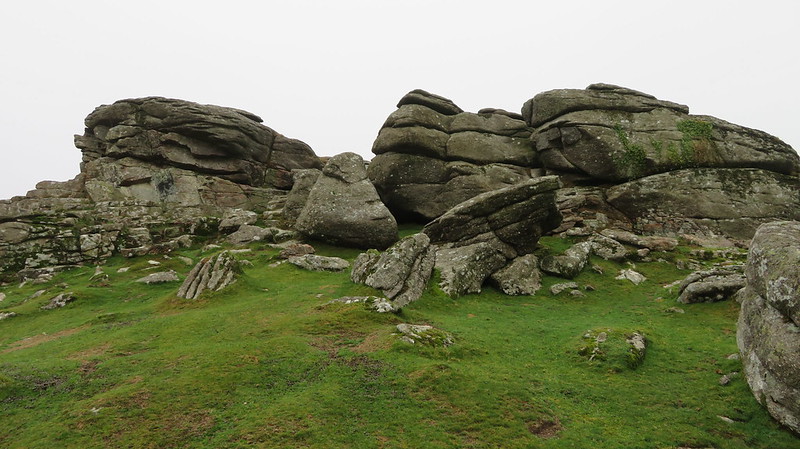TORS OF DARTMOOR
a database of both lesser- & well-known rocks and outcrops
Kestor RockKes Tor Rock, Kes Tor, Castor Rock, Castor, Cas Tor  Magnificent Kestor Rock (or Kes Tor) is one of the most prominent landmarks to stud the eastern edge of the North Moor. Its massive cake-like eminence from afar and projection above the surrounding commons make it unmistakable.  Kes Tor is famed for its rock basin, the largest recorded on Dartmoor, that was first discovered by George Wareing (G.W.) Ormerod during his explorations of the 19th Century. Worth (1953) writes: "It was discovered by Ormerod and at the time of the discovery was filled with peat and stone. Ormerod had it cleared of this deposit and was told that it had been filled about one hundred years before as presenting a small pool dangerous to sheep. Leaving it cleared he had a railing erected round it." The interesting thing about this is that if you study the basin you can still see the filled in holes where the rails were fixed into the granite. G.W. Ormerod (1810-1891) was a geologist born in Astley, Lancashire, October 1810. He is recorded in the Census of 1861 as 'Solicitor MA Oxon'. His address at that time is Mill Street, Chagford which fits perfectly with his 1858 assessment of the rock basin at Kes Tor. After all his exploits on Dartmoor in 1881 he is recorded at Woodway Road, Woodway, Teignmouth, aged 70 and still a 'Solicitor MA Oxon' with 2 servants. This is where he died in 1891 aged 80 years. Ormerod remains one of the earliest, if not the earliest, commentators on the rock basin phenomenon on Dartmoor.  The tor is widely referred to locally as 'Kes Tor', though sometimes as 'Kestor Rock' as per the OS map; but it was also once called 'Castor Rock'. Crossing (1912) suggests that "the tor may have derived its name from the Celtic kist, i.e, chest, which, indeed, is not improbable, as its square form certainly gives it a resemblance to such an object. Though not of great size Kes Tor is nevertheless striking in appearance, its situation contributing greatly to this." The west side of the outcrop reveals a huge breakaway of rock where blue granite (fine-grained) underlies the predominant tor granite (coarse-grained).  Views from the tor embrace the distant eastern highlands and valleys and ridges that make up the glorious landscape of East Dartmoor; comprised largely of woodlands and cultivated fields, the summits of Cranbrook Castle, Butterdon Hill and Mardon Down can also be seen gracing the hillsides above. Nearer is Meldon Hill, or Middleton as it was once called, with Chagford below to the left. Elsewhere the inner high moor dominates, with the remarkable dome of Cosdon seen to the north-west, with Wild and Watern Tors standing on the skyline like ruined castle-keeps.
| ||||||||||||||||||||||||||||||